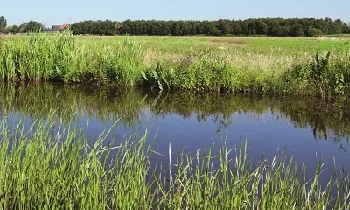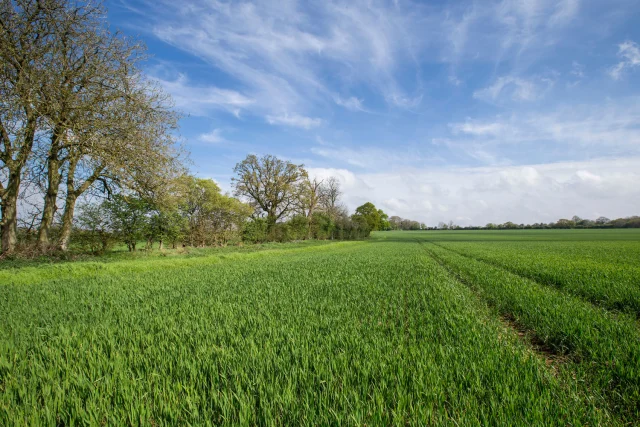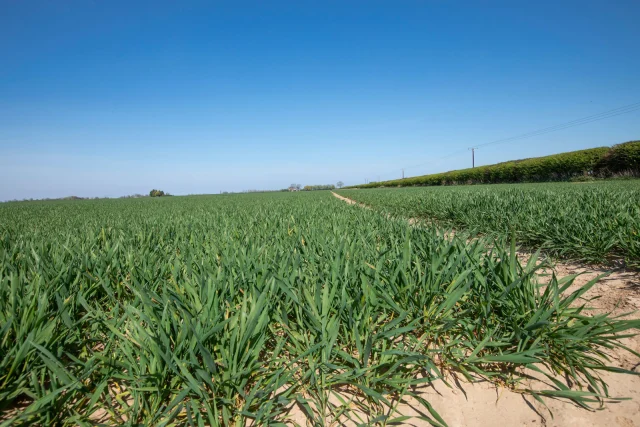Published on 1st March 2018
Local Insights
The Ultimate Guide to Buffer Zones

Spray buffer zone regulations are getting increasingly complex, so to stay on the right side of the law all growers, operators and advisers must be clear of the rules before venturing out with the sprayer.
What are aquatic buffer zones?
Buffer zones are an area of cropped land adjacent to watercourses (including ditches and dry ditches) that cannot be sprayed.
They are designed to protect aquatic organisms (including plants, fish, and insects) from potential toxicity caused by some plant protection products, where a risk has been identified during the authorisation process.
Many, but not all, products have a minimum buffer zone that must be adhered to when used next to a watercourse.
Where an aquatic Buffer Zone is required for a product on a particular crop this will be clearly stated on the product label.
Measured from the top of the bank, aquatic buffer zone distances vary from 1m for dry ditches up to 30m, but in some cases this can be reduced by following certain conditions.
Since the introduction of buffer zones in the 1990s, the rules have evolved and there are now three main schemes, as outlined below:
LERAP scheme
Interim scheme
Drift Reducing Technology (DRT)
There is also a fourth scheme specifically to protect insects and wildlife on uncropped land (see Non-Target Arthropod Buffer Zones).
Buffer zones have historically been specific to the product rather than the crop, but this is in the process of changing and all products are likely to have crop-specific buffer zones in future. Always check the label thoroughly.
1. LERAP scheme
Local Environment Risk Assessment for Pesticides
Introduced in 1999
This allows for buffer zones to be reduced to as little as 1m with certain technology (e.g. low drift nozzles) or lower application rate is used – only applies to products classed as “LERAP category B”.
For horizontal boom sprayers it is only possible to reduce buffer zones of 5 metres; buffer zones of greater than 5 metres cannot be reduced
Operators must complete a LERAP reduction assessment prior to application and keep records for three years. Guidance on how to complete this is found on the label and HSE’s website.
Some products are not eligible for buffer zone reduction under LERAP – applies to any “category A” products
The LERAP scheme is likely to be phased out at some point, but timescales are unclear so existing arrangements remain in place for the foreseeable future
The LERAP assessment process will probably remain in place when the LERAP scheme is phased out.
2. Interim scheme
Introduced in late 2011 to help address the difficulties of getting new products authorised, to aid the re-registration of older chemistry and to give the UK similar flexibility as other EU members
Offers more flexibility than the LERAP scheme by setting crop-specific buffer zones for individual products. There is clear information on the product label stating whether or not the buffer zone can be reduced.
The size of buffer required for all approved crops is clearly shown on the label
Buffer zones <5m can be reduced by following the LERAP reduction assessment process described above.
Buffer zones >5m cannot be reduced.
The interim scheme will replace LERAP “A” & “B” categories as products come up for re-registration by the Chemicals Regulation Division of HSE (CRD) and is already on many recently authorised products.
3. Drift Reducing Technology (DRT
This is the most stringent buffer zone scheme and gives users access to certain products that would have otherwise struggled to gain regulatory authorisation under the LERAP or interim schemes by making use of the latest low-drift technology
Crop-specific buffer zones are fixed, regardless of watercourse size or application rate used, so cannot be reduced
Label specifies three-star low-drift equipment and operating conditions must be used (e.g. 3* nozzles, operating pressure, etc.) up to 30m from any watercourse
Within that 30m, compulsory no-spray zones of 6, 12 or 18m will also apply, depending on crop
A list of accredited low drift equipment can be found at www.pesticides.gov.uk
How do I know which scheme applies?
Many product labels still show the older LERAP categories, but more recently authorised products (including those that have been re-registered) could have either the LERAP, interim or DRT scheme on the label.
Only one buffer zone scheme applies to any product and details will be clearly shown on the label.
Because the interim and DRT schemes set crop-specific buffer zones, it is possible any one product will have several different buffer zones outlined, so check the label carefully before spraying.
What if I mix products requiring different buffer zones?
Whenever tank mixes contain two or more products with different buffer zone rules always abide by the most restrictive label conditions.
The rules are legally binding for the use of most products so breaching the regulations could result in enforcement action, including prosecution, against the operator or employer.
Remember: always check the product label
Non-target arthropod buffer zones
This additional scheme aims to protect insects and wildlife in uncropped land, such as field boundaries and hedgerows
Permanent grass margins, boundary habitats (hedgerows) and land permanently taken out of agricultural production are classed as ‘non-crop land’ and need to be protected
Product-specific
The zones are non-reducible and measured from the edge of cropped land
Temporary stewardship margins (e.g. wild flower mixes) are classed as ‘cropped land’ and do not require additional buffer zones. However, these areas often become wildlife habitats so precautions should be taken to reduce drift onto these margins
Details are explained in the “Directions for use” section of the label
Arthropod buffers are advisory for some products but are statutory conditions of use for others, so check the label carefully. Where they are statutory they are non-reducible.
Statutory buffer zones are usually a 5m in-crop buffer. Advisory are usually 5-6 m buffer to the field edge. However, check the product label.
If you have any questions, please contact your local CTM or Tweet @Bayer4CropsUK.



